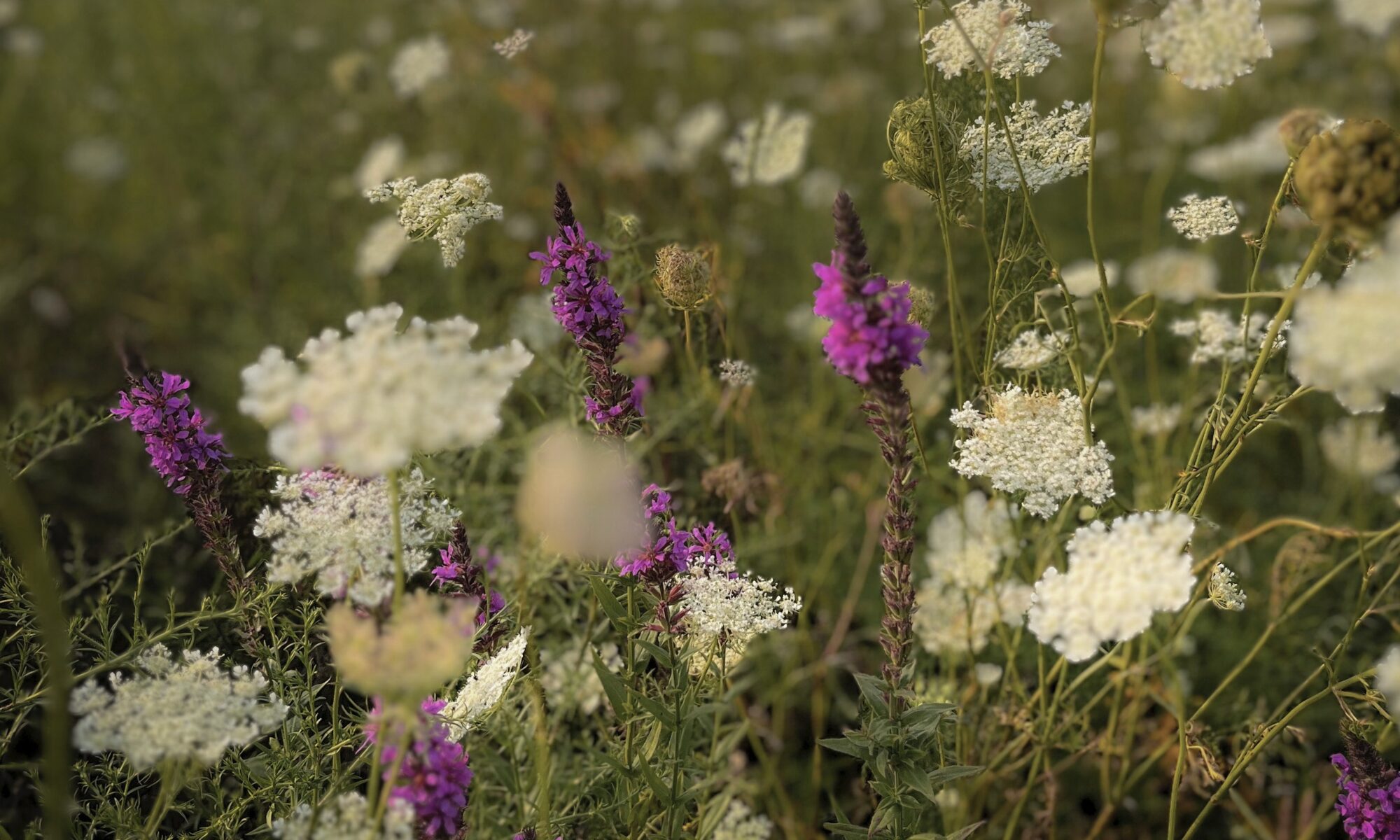Systems with greater diversity of soil organisms, plants and animals are more resilient. They tend to have superior soil fertility and respond better to stresses such as diseases, climatic extremes, human impacts and degradation. We encourage practices like crop rotation, integration of pollinator buffers, elimination of chemical controls like pesticides, and mixing crops and livestock.
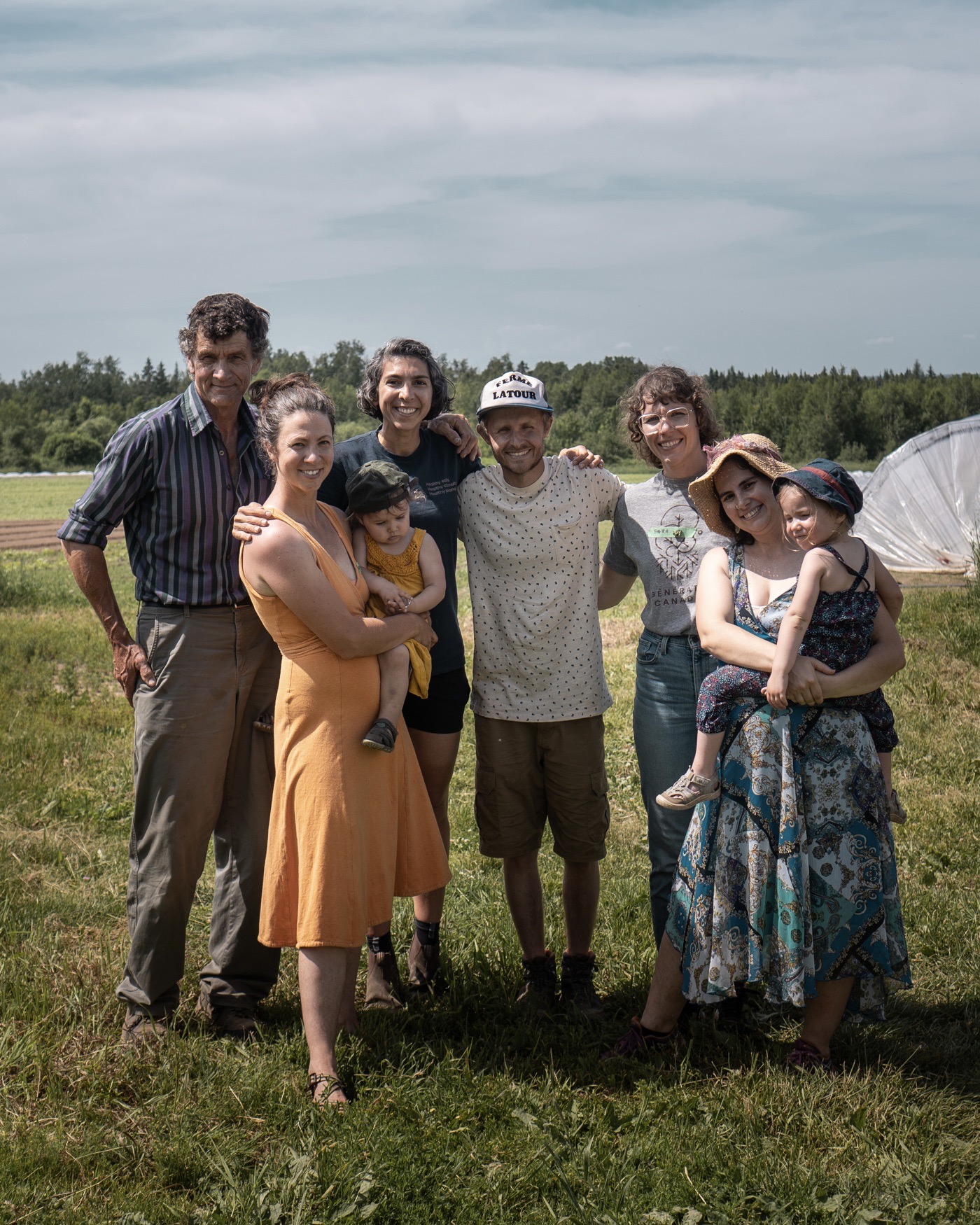
Biodiversity is the beating heart of resilient agroecosystems. It refers to the incredible variety of organisms thriving in balanced ecosystems–biodiversity fuels regeneration!
Farms function as managed ecosystems where plants, soil, and animals interact in intricate ways. When we farm in ways that support–and better yet–regenerate soil life, we improve the biodiversity on our landscapes and enhance their ability to provide ecosystem services, like nutrient cycling and pollination.
In the summer of 2023, the Regeneration Canada team visited Rébeka Frazer-Chiasson and her crew at Ferme Terre Partagée (FTP)—a farm cooperative specializing in vegetables and pasture-raised livestock in Rogersville, New Brunswick. The name ‘Ferme Terre Partagée’ reflects a commitment to shared land use among generations, plant and animal species, and humans. At FTP, maintaining biodiversity is a key component of the farm management plan.
The Importance of Biodiversity in Our Farms and Gardens
Most biodiversity is found in the soil. According to soil biology researcher Dr. Elaine Ingham, a teaspoon of soil contains up to one billion bacteria cells. This bacterial biomass is the equivalent of two cows per acre! This astounding diversity drives life above ground, cycling nutrients, controlling pests, and building resilient ecosystems we all rely on for food.
Nutrient cycling and soil health:
Biodiversity plays a vital role in nutrient cycling, as various plants contribute to a rich array of organic matter. For example, integrating plants with different rooting depths and types allows nutrients to be better dispersed throughout the soil profile. These varied root structures and depths also promote aeration and reduce soil compaction and erosion. Additionally, plant species richness – that is, the number of different plant species in a given area–is positively correlated to soil organic carbon and nitrogen levels. These higher soil nutrient levels stimulate greater microbial activity and contribute to effective nutrient cycling and decomposition of organic matter. Over time, this system can reduce agronomic reliance on synthetic inputs, including chemical fertilizers.
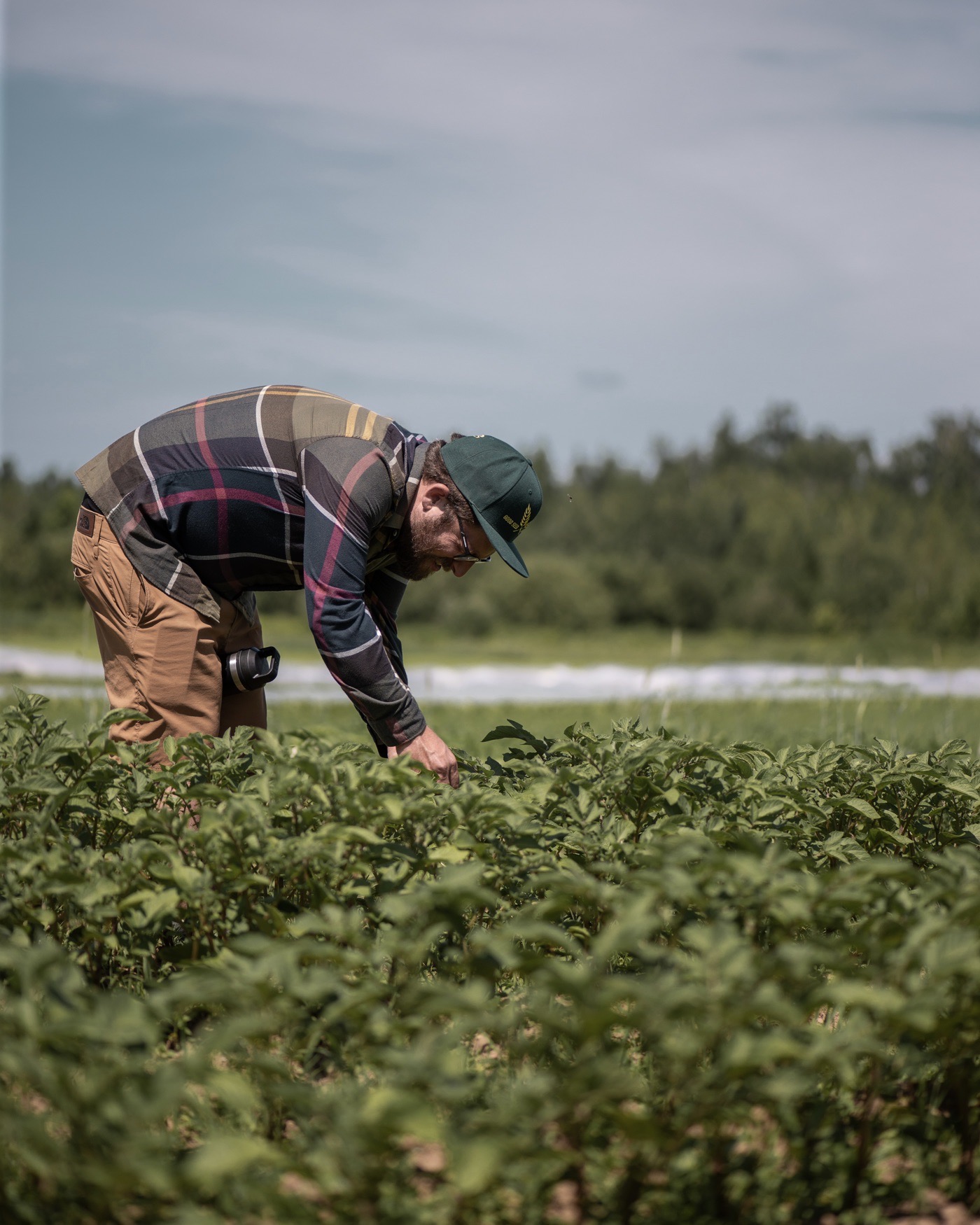
Pest and disease control:
In biodiverse farming systems, beneficial insects are attracted by a variety of plant species including buckwheat and crimson clover, helping to manage pest populations and limiting the need for synthetic pesticides. Furthermore, when different soil organisms coexist, disease, insect, and nematode problems are reduced. Competition for food and varied predators makes it challenging for pests to reach harmful population levels.
Resilience to climate change:
Biodiversity acts as a buffer against the uncertainties of a changing climate. By embracing a diversity of crops and plant species, farms create a system capable of adapting to a range of environmental conditions. For example, tomatoes and pole beans tend to perform well in drought situations, whereas plants like spinach and celery thrive when soils remain moist. This diversification safeguards farmers against the unpredictability of climate-related challenges.
Food diversity:
Protecting genetic diversity is crucial for a secure and sustainable food system. However, over 75% of global food biodiversity has disappeared in the past century due to globalization and the prioritization of certain crops for their profitability, ease of mass cultivation and resistance to spoilage during transportation. As a result, only a tiny fraction of Canada’s crop genetic diversity is available to farmers. Revitalizing agricultural resilience requires rediscovering regionally-adapted varieties and preserving Canada’s agricultural heritage. Indigenous communities and local seed-savers play a crucial role in conserving agrobiodiversity, possessing traditional knowledge vital for safeguarding various crop varieties.
Farmers like Rébeka and her team make an effort to incorporate heirloom varieties of plants when possible, save seeds and grow vegetables like garlic scapes and sunchokes, which are not typically found in mainstream grocery stores.
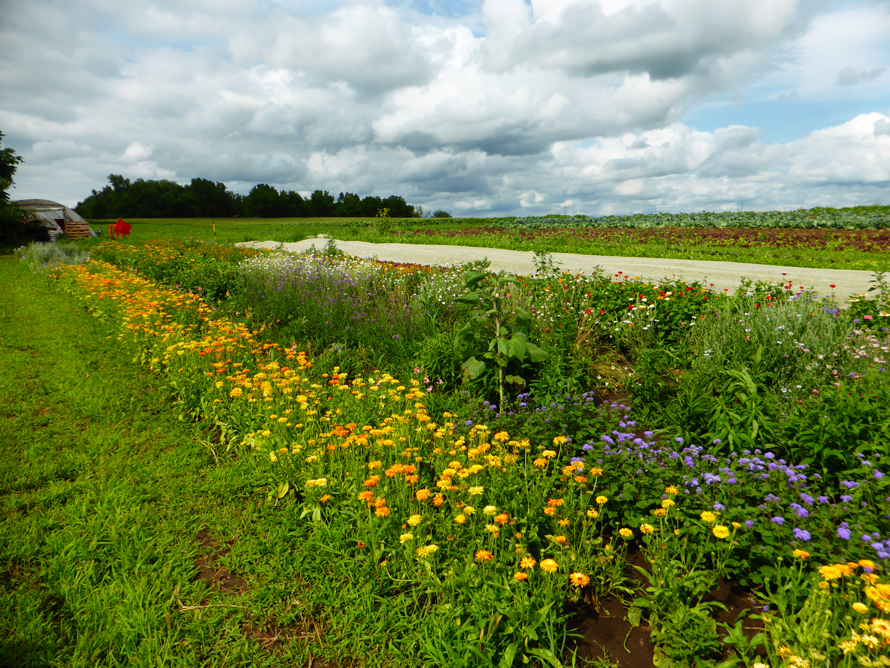
Indicators of Biodiversity on Farms
Understanding the health and resilience of our agricultural ecosystems requires assessing biodiversity. Farmers and researchers rely on several indicators to measure ecosystem diversity. These include:
● Species diversity: The number and variety of plant and animal species present on the farm, including native and endangered species. Bird and reptile populations are valuable indicators of overall biodiversity within agroecosystems.
● Soil biological diversity: The variety of microorganisms and animals living in the soil.
● Habitat diversity: The presence of diverse habitats like hedgerows, wetlands, and woodlands that provide vital resources and shelter for various species.
At Ferme Terre Partagée, fostering biodiversity has yielded significant benefits, including enhanced natural insect control, improved vegetable pollination which can lead to increased production, a consistent supply of livestock manure produced on-farm which reduces the need for synthetic fertilizers, and diversified revenue streams, providing resilience against financial stress.
For Rébeka, it has been a fascinating learning curve, where every year the fields provide new lessons. Over generations, the land has seen many changes in crop production and management practices, from a focus on livestock to cereals, grasses, strawberries, brussels sprouts, and most recently, a diversified organic market production.
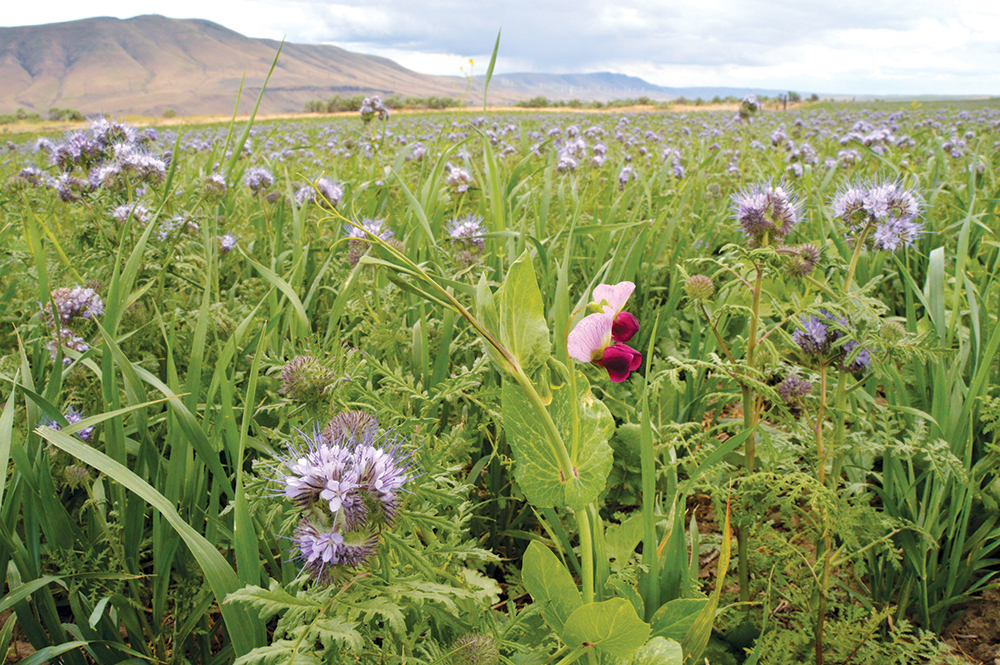
What Does Promoting Biodiversity Look Like on our Farms and Gardens?
Promoting biodiversity in our landscapes is essential for creating healthy and resilient ecosystems. Here are some practical ways that farmers and gardeners can increase biodiversity:
● Diverse cropping systems and intercropping: Growing multiple types of crops alongside each other encourages resilience, with different crops thriving in different conditions. Intercropping can also suppress weeds, control pests, and improve soil health.
Ferme Terre Partagée produces 40 different vegetable crops, while also growing hay and grain. The farmers primarily sell their vegetables through a community supported agriculture (CSA) model with 125-250 members. Some of their crops are also used to create value-added products like hot sauce.
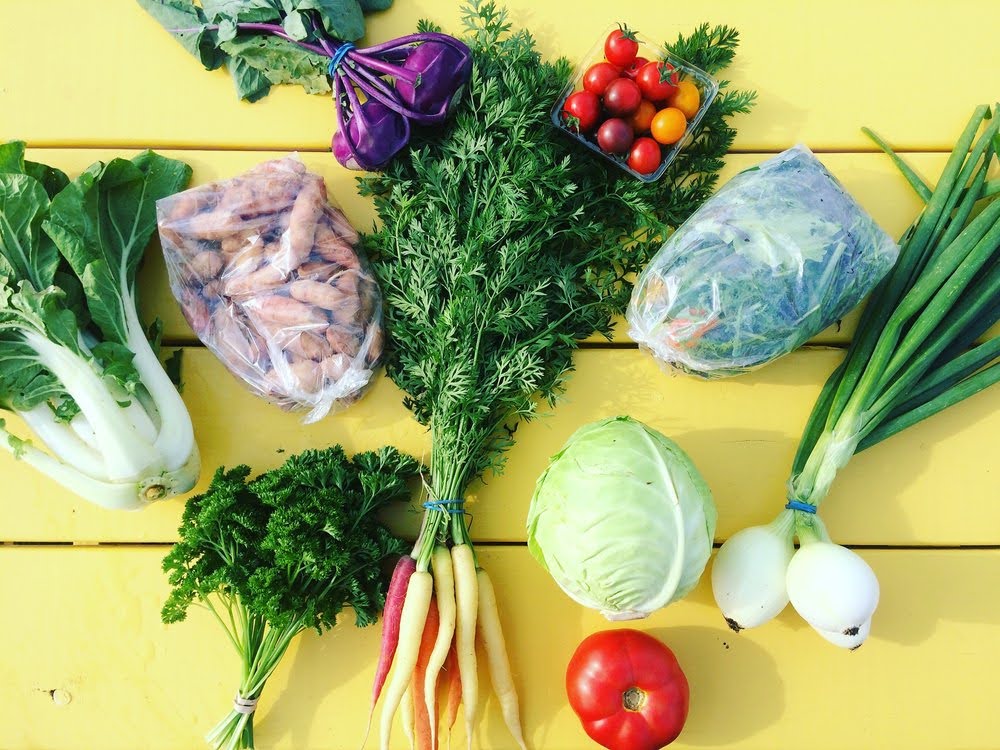
● Multispecies cover crops: Cover crops are typically planted to enhance soil fertility and increase organic matter and biodiversity. Using a diverse mix of cover crops nurtures the soil microbiome, contributes to the productivity and resilience of co-cultivated crops, and can help address multiple challenges.
Ferme Terre Partagée incorporates various crops for specific purposes. This includes using buckwheat to suppress weeds, employing winter rye and winter wheat to provide protective ground cover during the winter months, and cultivating rye for subsequent straw harvesting.
● Riparian Buffer Zones: Planting trees, shrubs, and grasses along waterways protects riparian ecosystems, providing habitat for aquatic life, filtering runoff, and stabilizing stream banks. These buffer zones also enhance biodiversity and improve water quality.
● Pollinator strips: Pollinator strips provide food and habitat for pollinators and other beneficial organisms. These strips can be planted along the edges of fields or incorporated into the crop rotation.
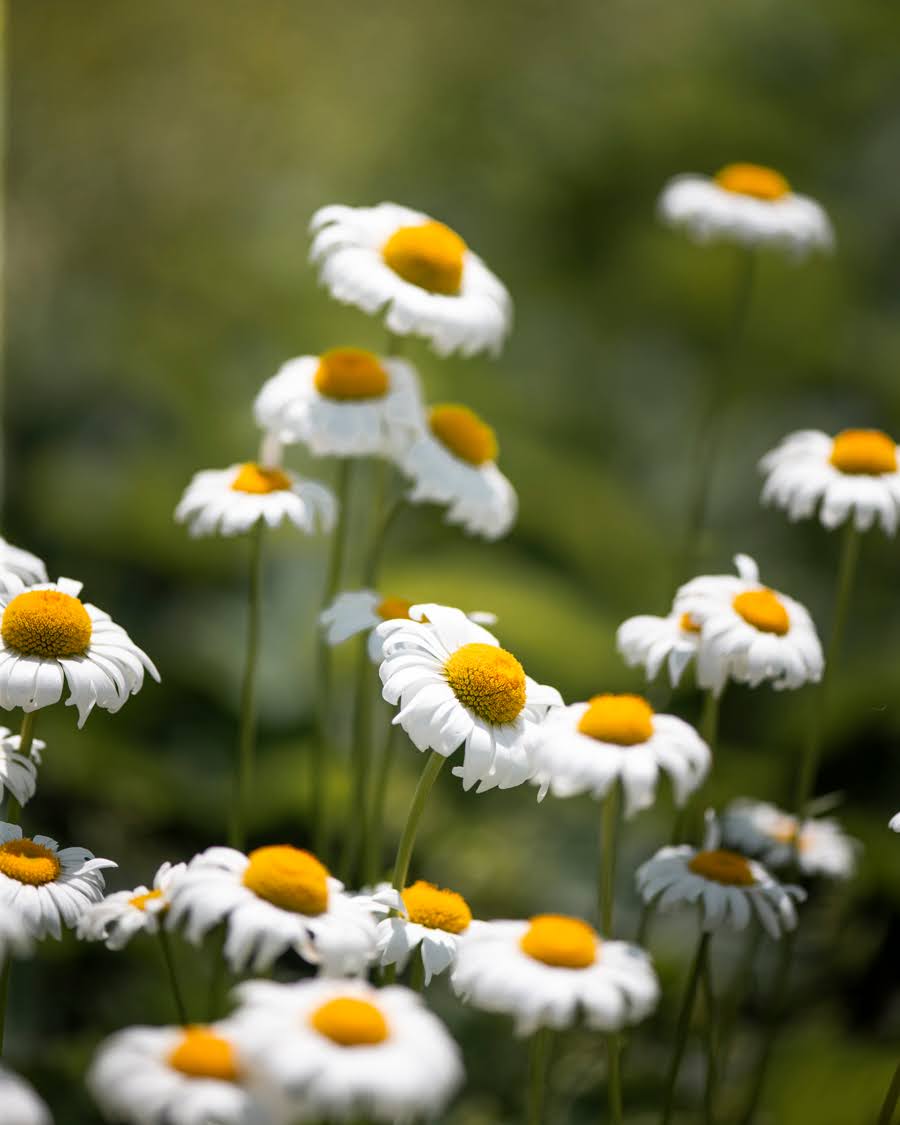 Ferme Terre Partagée employs a wildflower mix to provide sustained support for pollinators throughout the entire season. This pollinator mix not only adds to the farm’s visual allure but also plays a crucial role in optimizing pollination for vegetable crops.
Ferme Terre Partagée employs a wildflower mix to provide sustained support for pollinators throughout the entire season. This pollinator mix not only adds to the farm’s visual allure but also plays a crucial role in optimizing pollination for vegetable crops.
● Integrating livestock: The strategic inclusion of animals, such as chickens, cows, pigs, or sheep, into the agricultural system. This approach considers the interactions between crops and animals, emphasizing a holistic and symbiotic relationship that benefits both aspects of farming.
Ferme Terre Partagée raises a diversity of animals, including pastured chickens, beef, and pigs. In addition, producer members associated with the farm specialize in selling lamb, beef, and pork. This strategic blend of livestock not only serves as a source of diverse and high-quality meat but also contributes significantly to the farm’s biodiversity and resilience.
● Habitat creation: Creating and maintaining diverse habitats, such as hedgerows, wildflower patches, birdhouses, bat boxes, mason bee homes, and wildlife ponds, provides food and shelter for a variety of organisms and encourages wildlife diversity.
At Ferme Terre Partagée, the construction of birdhouses is a deliberate effort to attract swallows, potentially aiding in mosquito control.
Embracing biodiversity goes beyond cultivating resilient landscapes; it shapes a future where farming and gardening foster dynamic and adaptable ecosystems. For producers like Rébeka and the Ferme Terre Partagée farm crew, farming goes beyond the fields; it is a communal affair that ripples into the community and enriches our dining tables with a diverse array of nutrient-rich produce.
Every choice, from diversifying crops to implementing practices like pollinator strips, is an investment in the future of our planet and our food sovereignty. Let us all be stewards of this change, starting with our backyards, farms, and communities. Together, we can cultivate a future where abundance and regeneration go hand in hand.
To know more about regenerative practices at Ferme Terre Partagée, watch the recording of the webinar “Regenerating the Planet” and listen to the podcast episode with Rébeka Frazer-Chiasson.
Join the regenerative agriculture movement! Stay updated with our Principles of Regenerative Land Management blog series by subscribing to our newsletter and following our social media channels. We are delighted to have you on this journey with us!
If you have any questions or comments about the topics covered in this blog post, please contact our Education & Research Manager at: paige@regenerationcanada.org. If you have questions specific to the Stories of Regeneration campaign, please connect with our Campaign Manager at: alieska@regenerationcanada.org.

